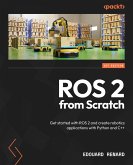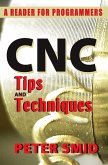Through a systematic examination of vintage computing from the 1970s through the 1990s, the book illuminates how fundamental design principles of classic hardware-such as mechanical keyboards, modular construction, and simplified interfaces-often surpass modern equivalents in key aspects. The author presents compelling evidence through technical specifications and reliability studies, while maintaining an accessible tone that appeals to both technical enthusiasts and general readers interested in technology.
The book's progression from technical characteristics to the modern revival movement, and finally to future implications, creates a comprehensive understanding of vintage computing's place in today's world. It uniquely bridges the gap between historical preservation and practical application, demonstrating how classic hardware principles can inform contemporary discussions about sustainability, right-to-repair legislation, and technical education. Real-world examples and case studies, including interviews with collectors and repair specialists, provide concrete evidence of how vintage technology continues to influence and enhance modern computing practices.
Dieser Download kann aus rechtlichen Gründen nur mit Rechnungsadresse in A, B, BG, CY, CZ, D, DK, EW, E, FIN, F, GR, H, IRL, I, LT, L, LR, M, NL, PL, P, R, S, SLO, SK ausgeliefert werden.









